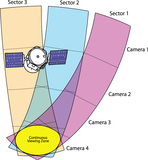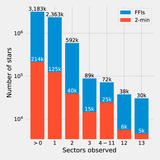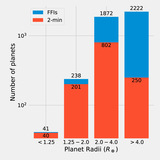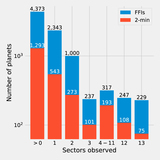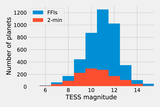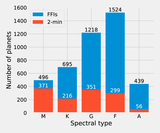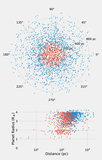Image Details

Caption: Figure 7.
Ratio of stars observed to planets detected as a function of the number of sectors a star is observed for. The longer a star was observed, the higher probability a planet would be detected. Targets observed at 2-minute cadence are shown in red, while blue are FFI targets. For 2-minute cadence stars the average hit rate was 0.60%, while including all stars on the CTL drops this to 0.14%. While observing for a longer baseline increased the number of planets, the increase is not linear. For 2-minute cadence targets, an increase of 12× in observing baseline increased the hit rate by a factor of just 4.4. There are comparatively few planets in the 12 and 13 sector bins, so we show Poisson uncertainties on these bars demonstrating that there is not a measurable difference between observing for 12 or 13 sectors. Red and blue bars are not stacked; both start at zero.
Copyright and Terms & Conditions
© 2018. The American Astronomical Society.


